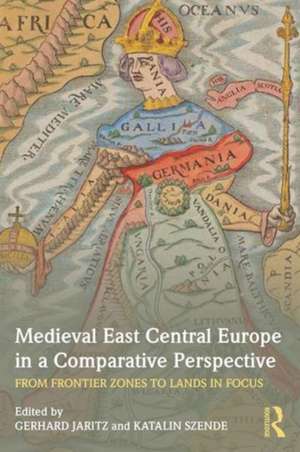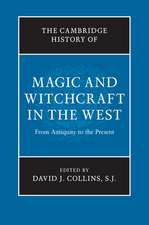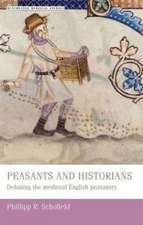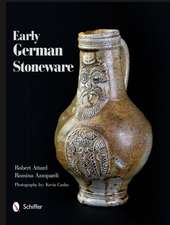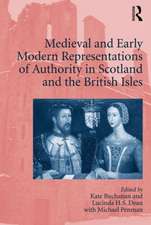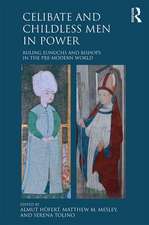Medieval East Central Europe in a Comparative Perspective: From Frontier Zones to Lands in Focus
Editat de Gerhard Jaritz, Katalin Szendeen Limba Engleză Paperback – 10 mai 2016
Including 15 original chapters from an interdisciplinary team of contributors, this collection begins by posing the question: "What is East Central Europe?" with three specialists offering different interpretations and presenting new conclusions. The book is then grouped into five parts which examine political practice, religion, urban experience, and art and literature. The contributors question and explain the reasons for similarities and differences in governance and strategies for handling allies, enemies or subjects in particular ways. They point out themes and structures from town planning to religious orders that did not function according to political boundaries, and for which the inclusion of East Central European territories was systemic.
The volume offers a new interpretation of medieval East Central Europe, beyond its traditional limits in space and time and beyond the established conceptual schemes. It will be essential reading for students and scholars of medieval East Central Europe.
| Toate formatele și edițiile | Preț | Express |
|---|---|---|
| Paperback (1) | 394.39 lei 6-8 săpt. | |
| Taylor & Francis – 10 mai 2016 | 394.39 lei 6-8 săpt. | |
| Hardback (1) | 1003.43 lei 6-8 săpt. | |
| Taylor & Francis – 24 mai 2016 | 1003.43 lei 6-8 săpt. |
Preț: 394.39 lei
Nou
Puncte Express: 592
Preț estimativ în valută:
75.46€ • 79.00$ • 62.44£
75.46€ • 79.00$ • 62.44£
Carte tipărită la comandă
Livrare economică 07-21 aprilie
Preluare comenzi: 021 569.72.76
Specificații
ISBN-13: 9781138923478
ISBN-10: 1138923478
Pagini: 280
Ilustrații: 33
Dimensiuni: 156 x 234 x 18 mm
Greutate: 0.41 kg
Ediția:1
Editura: Taylor & Francis
Colecția Routledge
Locul publicării:Oxford, United Kingdom
ISBN-10: 1138923478
Pagini: 280
Ilustrații: 33
Dimensiuni: 156 x 234 x 18 mm
Greutate: 0.41 kg
Ediția:1
Editura: Taylor & Francis
Colecția Routledge
Locul publicării:Oxford, United Kingdom
Public țintă
Postgraduate and UndergraduateCuprins
Gerhard Jaritz, Introduction
What is East Central Europe?
Nora Berend, The Mirage of East Central Europe: Historical Regions in a Comparative Perspective
Márta Font, The Emergence of East Central Europe and Approaches to Internal Differentiation
Anna Kuznetsova, The Notion of ‘Central Europe’ in Russian Historical Scholarship
Political Practices
Stefan Burkhardt, Between Empires: South-Eastern Europe and the Two Roman Empires in the Middle Ages
Julia Burkhardt, Negotiating Realms: Political Representation in Late Medieval Poland, Hungary, and the Holy Roman Empire
Religious Space
József Laszlovszky Local Tradition or European Patterns? The Grave of Queen Gertrude in the Pilis Cistercian Abbey
Beatrix F. Romhányi, Mendicant Networks and Population in a European Perspective
Johnny Grandjean Gøgsig Jakobsen, Friars Preachers in Frontier Provinces of Medieval Europe
Urban Space
Olha Kozubska-Andrusiv, Comparable Aspects in Urban Development: Kievan Rus’ and the European Middle Ages
Katalin Szende, Town Foundations in East Central Europe and the New World: the Use of the Grid Plan in a Comparative Perspective
Michaela Antonín Malaníková, Female Engagement in Medieval Urban Economy: Late-Medieval Moravia in a Comparative Perspective
Art and Literature
Béla Zsolt Szakács, The Place of East Central Europe on the Map of Romanesque Architecture
Anna Adamska, Intersections: Medieval East Central Europe from the Perspective of Literacy and Communication
Julia Verkholantsev, Etymological Argumentation as a Category of Historiographic Thought in Historical Writings of Bohemia, Poland, and Hungary
János M. Bak, What did we learn? What is to be done? Some insights and visions after reading this book
What is East Central Europe?
Nora Berend, The Mirage of East Central Europe: Historical Regions in a Comparative Perspective
Márta Font, The Emergence of East Central Europe and Approaches to Internal Differentiation
Anna Kuznetsova, The Notion of ‘Central Europe’ in Russian Historical Scholarship
Political Practices
Stefan Burkhardt, Between Empires: South-Eastern Europe and the Two Roman Empires in the Middle Ages
Julia Burkhardt, Negotiating Realms: Political Representation in Late Medieval Poland, Hungary, and the Holy Roman Empire
Religious Space
József Laszlovszky Local Tradition or European Patterns? The Grave of Queen Gertrude in the Pilis Cistercian Abbey
Beatrix F. Romhányi, Mendicant Networks and Population in a European Perspective
Johnny Grandjean Gøgsig Jakobsen, Friars Preachers in Frontier Provinces of Medieval Europe
Urban Space
Olha Kozubska-Andrusiv, Comparable Aspects in Urban Development: Kievan Rus’ and the European Middle Ages
Katalin Szende, Town Foundations in East Central Europe and the New World: the Use of the Grid Plan in a Comparative Perspective
Michaela Antonín Malaníková, Female Engagement in Medieval Urban Economy: Late-Medieval Moravia in a Comparative Perspective
Art and Literature
Béla Zsolt Szakács, The Place of East Central Europe on the Map of Romanesque Architecture
Anna Adamska, Intersections: Medieval East Central Europe from the Perspective of Literacy and Communication
Julia Verkholantsev, Etymological Argumentation as a Category of Historiographic Thought in Historical Writings of Bohemia, Poland, and Hungary
János M. Bak, What did we learn? What is to be done? Some insights and visions after reading this book
Recenzii
"This is the first book to look not only at the nature, composition and character of East Central Europe in the Middle Ages but also at its intellectual construction. A comprehensive range of contributions, involving much comparative material and supported by extensive bibliographies, illustrates the region’s complexity and the difficulties of its definition. The individual essays are supported by extensive bibliographies, making them chapters of first resort for those interested in the principal themes of European medieval history."
Martyn Rady, Masaryk Professor of Central European History, University College London, UK
"East Central Europe is nowadays attracting more and more attention, but rarely in a comparative perspective. This is therefore no conventional handbook or introductory survey. Under the direction of Gerhard Jaritz and Katalin Szende, an array of scholars offer a variety of original and at times surprising perspectives. The essays, which vary in topics from towns and monasticism to historiography, to political representation, to church architecture, to literacy and etymological argumentation, illustrate both general European developments in the Middle Ages as well as the particular factors of the East Central region. These essays make a valuable contribution to a topic that has generally been treated only in a narrow context, and explain why the medieval history of the region has often been marginalized or misunderstood, and why it should matter to us today."
Florin Curta, University of Florida, USA
Martyn Rady, Masaryk Professor of Central European History, University College London, UK
"East Central Europe is nowadays attracting more and more attention, but rarely in a comparative perspective. This is therefore no conventional handbook or introductory survey. Under the direction of Gerhard Jaritz and Katalin Szende, an array of scholars offer a variety of original and at times surprising perspectives. The essays, which vary in topics from towns and monasticism to historiography, to political representation, to church architecture, to literacy and etymological argumentation, illustrate both general European developments in the Middle Ages as well as the particular factors of the East Central region. These essays make a valuable contribution to a topic that has generally been treated only in a narrow context, and explain why the medieval history of the region has often been marginalized or misunderstood, and why it should matter to us today."
Florin Curta, University of Florida, USA
Descriere
Medieval East Central Europe in a Comparative Perspective draws together the new perspectives concerning the relevance of East Central Europe for current historiography. Grouped into four parts the essays take up comparable phenomena in political, social, religious, and cultural life. They question and explain the reasons for parallel practices and differences in rulership and governance and point out themes and structures from gender to religious orders that did not function according to political boundaries. The volume offers a new interpretation of medieval East Central Europe, beyond its traditional limits in space and time and beyond the established conceptual schemes.
